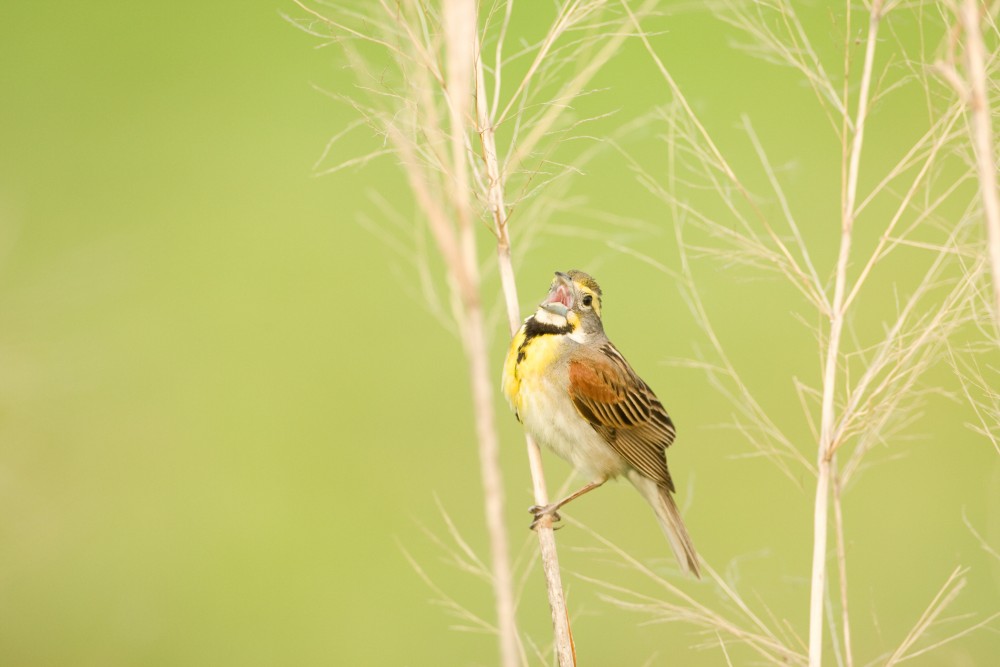Mile 32 - La Petite Gemme Prairie
Category News, Projects | Posted on February 1, 2018

At Mile 32, the Frisco Highline Trail passes through a rare Missouri prairie
On the edge of Bolivar, Missouri, the Frisco Highline Trail passes through beautiful and rare La Petite Gemme Prairie, the only publicly-owned virgin prairie in Polk County. Native tallgrass prairies once covered nearly a third of Missouri. Now, less than .05% remains. This piece of Missouri’s natural heritage is indeed a rare jewel!
This small 37-acre prairie in Polk County takes its name, meaning the Little Gem, from the French heritage of the area. It lies along the Frisco Highline Trail that runs 35 miles between Springfield and Bolivar. A botanically diverse and scenic upland prairie on soils derived from shale and limestone, La Petite Gemme is a lovely spot to relax and wander in. A total of 321 plant species thrive there, including native grasses and wildflowers that bloom throughout the year.
The site was purchased by the non-profir Missouri Prairies Foundation in 1974, and has slowly been surrounded by development. The entire site was declared a state Natural Area by the Missouri Department of Conservation, and is cooperatively managed by the two groups.
Natural History
La Petite Gemme Prairie, as the name implies, is one of nature’s little gems. The name recognizes the French who governed this land for 100 years. This prairie is a remnant of what was once the much larger Three Mound Prairie.
Like a gem, the prairie sparkles with seasonal flowers. Western and sawtooth sunflowers, asters, shooting stars, blue sage, butterfly milkweed and compass plant add color and attract numerous butterflies and other beneficial insects. Pomme de Prairie (the Indian’s wild potato) and prairie mimosa are two interesting and uncommon plants found there. Tall grasses including Indian grass, big bluestem, switchgrass, and others wave in the wind, giving the prairie its special character. These grasses are used to hot Missouri summers, yet hidden underneath are nine species of mosses!
Henslow’s sparrow, upland sandpiper, and scissor-tailed flycatcher are some of the birds who call this prairie home. They share this spot with legless lizards (the so-called glass snake), rabbits, coyotes and ornate box turtles.
This prairie was like an island in the oak and hickory forest of the Ozark border. In 1855, Ezekial M. Campbell, a Mexican War veterean, laid claim to the land under a “swamp land patent”. In 1884, the Springfield and Northern Railroad built its tracks on the west side of the property. Through several generations spanning 80 years, the Campbell heirs held this property and used it as a hay meadow until 1974 when they sold it to the Missouri Prairie Foundation. This non-profit organization is dedicated to the preservation of true Missouri prairie. Today the property is managed under a lease agreement by the Missouri Department of Conservation.
The important Role of Wildfires
Wildfires have always played a role in the maintenance of prairie plants and soil. Historically, natural fires probably occurred most often during summer and fall. In modern times, the Conservation Department simulates these natural fires through what is called “controlled burning” through a hay and resting rotation basis. “Prescribed burning” is done in the spring to help control cool-season plants that are not native to the prairie.
For more information about prairies and the Missouri Prairie Foundation, visit www.moprairie.org